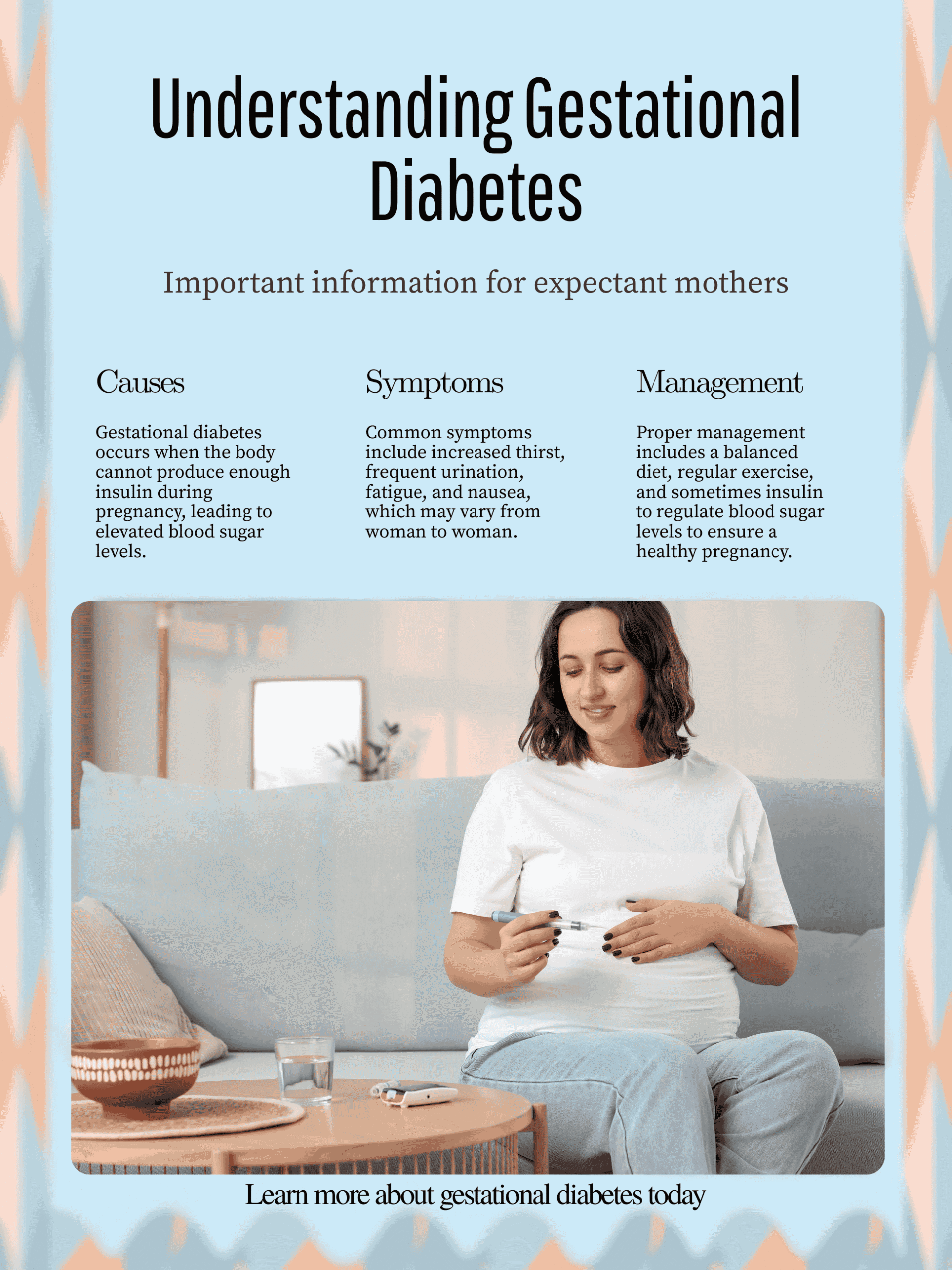If you’re expecting, it’s natural to wonder about conditions that can affect pregnancy. Gestational diabetes (GDM) is one of the most common—and most manageable—issues we see. With timely screening, healthy habits, and the right follow‑up, most women with GDM deliver healthy babies.
What is gestational diabetes?
During pregnancy, hormones from the placenta can make your body less responsive to insulin (the hormone that controls blood sugar). If your body can’t keep up, blood sugar rises—that’s gestational diabetes. It usually appears in the second half of pregnancy, which is why routine screening happens then.
It’s not your fault. GDM is driven by normal pregnancy hormones plus individual risk factors; even very health‑conscious women can develop it.
How common is it?
GDM affects roughly 1 in 10 pregnancies (rates vary by age, weight, and ethnicity), and has been increasing worldwide.
Who is at higher risk?
- Previous GDM or a baby who weighed 4.0–4.5 kg or more
- Overweight/obesity before pregnancy
- Family history of type 2 diabetes
- PCOS
- Age over 25
- Certain ethnic backgrounds (e.g., South Asian, Hispanic/Latino, Native American, Pacific Islander)
What symptoms should I look for?
Many women have no symptoms at all, which is why screening is important. If symptoms occur, they can include thirst, frequent urination, tiredness, or nausea—signs that can overlap with normal pregnancy. Testing is the only way to know for sure.
How is GDM screened and diagnosed? (24–28 weeks)
Most women are screened between 24 and 28 weeks:
- One‑step approach (75‑g OGTT): A diagnosis is made if any of the following are high—fasting, 1‑hour, or 2‑hour values (based on international criteria).
- Two‑step approach: A 50‑g screening test followed—if needed—by a 100‑g, 3‑hour test. Both approaches are used, depending on your clinic.
Important point about first‑trimester (early) testing
If high sugar is found in the first trimester, it can mean two different things:
1) Preexisting (“overt”) diabetes that was present before pregnancy—this is diagnosed when early levels are very high (for example A1c ≥ 6.5% or fasting sugar ≥ 126 mg/dL) and should be managed as preexisting diabetes, not as GDM.
2) Early GDM (before 20 weeks)—milder elevations that don’t meet “overt diabetes” thresholds.
What’s new about “early GDM”?
Recent high‑quality research (the TOBOGM program) suggests we should individualise decisions before 20 weeks:
- If early values are more clearly elevated (the study’s “higher band”), starting treatment early reduced certain newborn complications—especially breathing problems right after birth.
- If early values are only mildly elevated (the study’s “lower band”), many women returned to normal by 24–28 weeks without treatment, and starting treatment too early was linked to a higher chance of a smaller‑than‑expected baby. In these cases, it’s often best to repeat the test at 24–28 weeks and treat only if GDM persists.
In short, we treat early when sugars are clearly high, and watch‑and‑retest when they’re only slightly high. This avoids overtreatment and keeps babies growing well.
Why does GDM matter?
When blood sugar remains high, risks increase for preeclampsia, larger baby size (which can complicate delivery), and neonatal low blood sugar, among other issues. The good news: managing GDM lowers these risks.
How is GDM managed?
Most women do well with:
- Nutrition support: Balanced meals with mindful carbohydrate portions
- Regular activity: Walking, prenatal yoga, or as advised
- Home glucose checks: To see what works for your body
Some women also need insulin (the preferred medication in pregnancy if medicine is required). Common glucose targets are ≤95 mg/dL fasting, ≤140 mg/dL 1‑hour after meals, or ≤120 mg/dL 2‑hours after meals, customised to you.
What happens after birth?
Blood sugar usually returns to normal after delivery. Because having GDM increases future risk of type 2 diabetes, we’ll schedule:
- A postpartum glucose test at 4–12 weeks, and
- Lifelong screening every 1–3 years (earlier if planning another pregnancy).
Key takeaways
- GDM is common and manageable—early detection and a clear plan are key.
- Early testing mostly aims to find preexisting diabetes; for milder early elevations, re‑testing at 24–28 weeks is often the safest approach.
- After delivery, stay connected for postpartum testing and ongoing check‑ups to protect your long‑term health.
